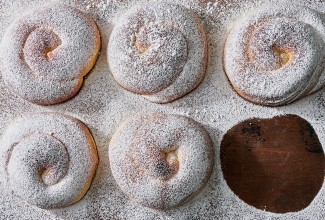Puerto Rican mallorcas are the sweet, fluffy buns you need to bake right now
These classic lard-based pastries have a history nearly as rich as their flavor.
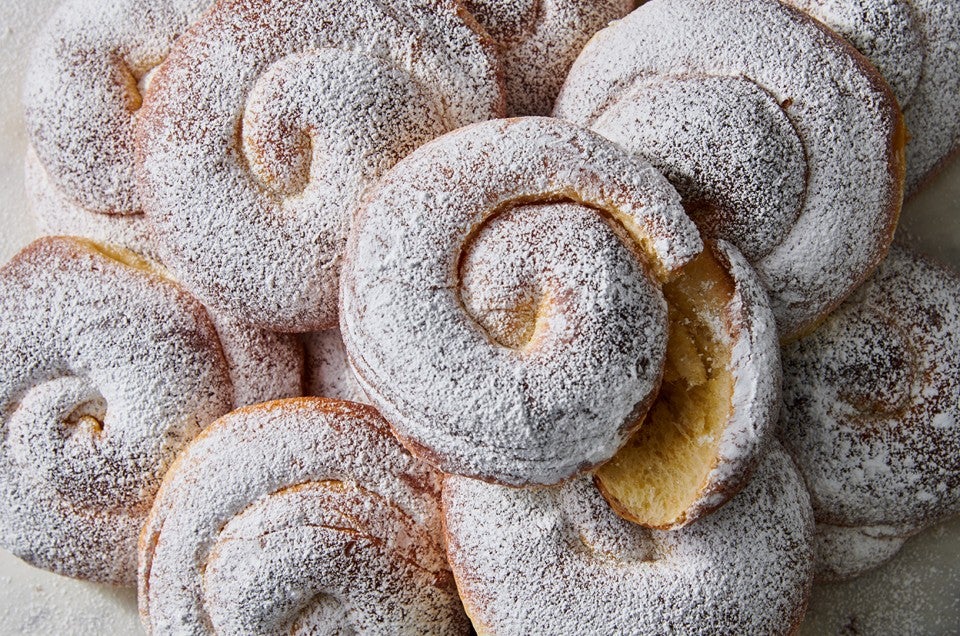

I moved from my native Puerto Rico to New England 15 years ago to attend MIT, eventually becoming a baker and restaurateur. Although the yearning for my homeland never fades, I feel instantly connected whenever I rip into a freshly baked mallorca and dip it into my morning café con leche.
Mallorcas are a fluffy, yeasted sweet bread made with lard and topped with confectioners’ sugar, commonly found in Puerto Rican bakeries all over the island. At Little Sister, my Puerto Rican-inspired café in Providence, Rhode Island, we make our own rendition of mallorcas, melding elements from the pastry’s original Spanish prototype and its subsequent evolution in Puerto Rico.
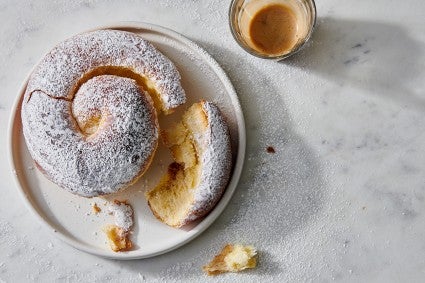
Pastry is not native to tropical Puerto Rico; it is a tradition we inherited from the Spaniards during the 405 years our island was a Spanish colony. During the four centuries of Spanish rule, ships loaded with imported wheat flour docked in Old San Juan, and lard was rendered from non-native domesticated pigs to make the rich pastries adored by the criollo population. The recipe for mallorcas was similarly imported, arriving in the 1800s with waves of immigration from the Balearic Islands. Puerto Rican mallorcas are named after the island of Mallorca in Spain, where bakers prepare a similar pastry called ensaïmada, from saïm, meaning “lard”. (The ensaïmada came to contain lard when Jewish bakers in 14th century Mallorca were persecuted and decided to modify their oil and butter-based breads to “prove” they had converted their religion.) It was Mallorcan immigrants who started the oldest and most famous mallorca bakery in Puerto Rico: La Bombonera Puig y Abraham, founded in 1902.
Balearic pastry traditions have adapted well to the humid and warm climate of Puerto Rico — the mallorca dough has a strong gluten network to withstand a vigorous rise in warm conditions without overproofing. Over time, the Puerto Rican mallorca has diverged from the original to suit the local palate: It’s more similar in texture to brioche with a tighter, cakier crumb, whereas the Balearic version is incredibly light and fluffy with a crispy exterior from the lard. And while the Spanish make variations on the mallorca (like with candied squash filling, for example), in Puerto Rico we just eat them in the classic style, showered with confectioners’ sugar. I remember the workers at La Bombonera dusting the sugar on top to each customer’s liking; for me, always more, more, more!
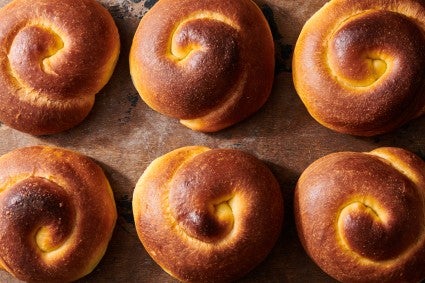
Over time, the artisanal pastry tradition in Puerto Rico has eroded and mallorcas have degraded. Flavorful lard has been replaced by cheaper, blander vegetable shortening, while the richness of eggs has been supplanted by yellow food dye, emulsifiers, and more shortening. La Bombonera ended its 110-year run in 2012. Today, most mallorcas are made in large commercial facilities and purchased in plastic bags at the supermarket. They taste like nameless enriched breads, and their only connection to the original is their shape and the distinctive sugared top. I fear the artisanal tradition of these incredible pastries is being lost as production becomes industrialized and fewer young people enter the craft.
During a recent trip to Spain, I was able to connect the dots between the Puerto Rican pastries of my childhood and the prototypes perfected in Mediterranean Spain over centuries. As I ripped into ensaïmadas in the Mercado Central of Valencia, I thought back to the mallorcas I ate growing up and pondered how I could meld the best attributes of each version. Beautifully flaky with lard like the Spanish version. Texturally rich and excessively decadent with too much sugar like the Puerto Rican mallorcas of my youth.
I got to work as soon as I returned to my kitchen. I started with a previous version of mallorcas that had never quite been perfect for me, then applied my newest ideas. I replaced the eggs with egg yolks to increase the dough’s richness. I opted to laminate the dough with lard as I’d seen the bakers from Forn Sant Francesc in Mallorca do on Instagram: smear the lard on the dough and stretch, roll, and coil it. I pushed the proofing times longer and longer to make them fluffier, my nerves on high at the 16-hour mark. Once they came out of the oven, I generously dusted them with confectioners’ sugar and took a bite. All the feelings of love, warmth, and nostalgia came rushing back. Mission accomplished.
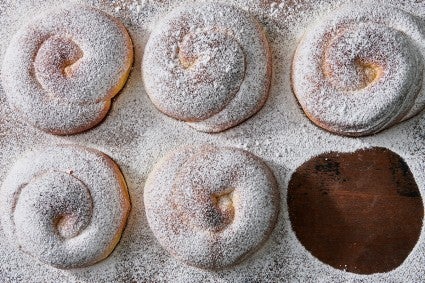
I am honored to share my mallorca recipe and encourage you to tweak it and make it your own. I don’t claim to have the most traditional version; tradition and authenticity are subjective and ever-evolving. My recipe is true to my lived experience, with the exact attributes I love of all the versions that came before. The shaping technique is the most important aspect of mastering this recipe, and I encourage you not to be stingy with the lard. Play around with the size; the recipe as written will make pastries as big as your face, and you can size up or down accordingly.
You can eat your mallorcas as is, or get lost inside the Internet black hole researching ensaïmadas and discover how bakers in Spain slice them open and pipe all manner of fillings inside: Nutella, pastry cream, whipped cream, and more. My hands-down favorite way to serve mallorcas is how we prepare them at Little Sister: sliced in half and stuffed with ham, melted Swiss cheese, and a sunny egg with a perfectly runny yolk.
Cover photo and food styling by Liz Neily.
